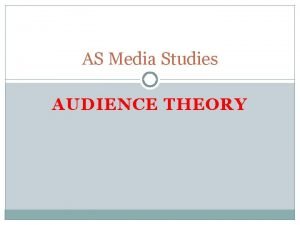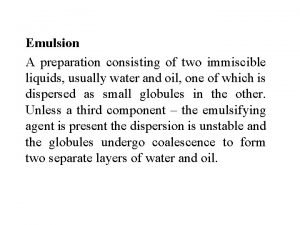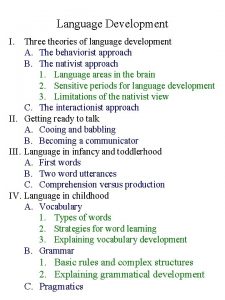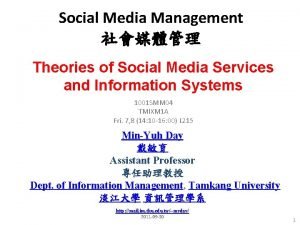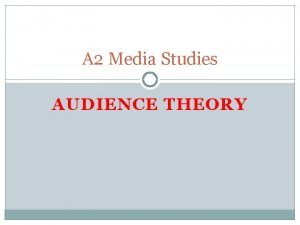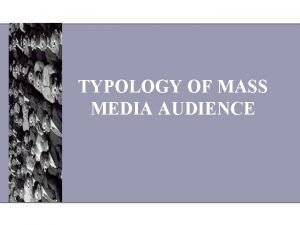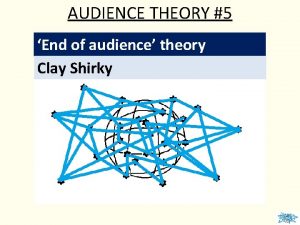Media Audience Theories Audience Theory There are three






- Slides: 6

Media: Audience Theories

Audience Theory • There are three theories of audience that we can apply to help come to a better understanding about the relationship between media texts and audience: 1. The Effects Model or the Hypodermic Model 2. The Uses and Gratifications Model 3. Reception Theory

The Effects Model/The Hypodermic Needle Model • The consumption of media texts has an (apparently usually negative) effect or influence upon the audience • The messages in media texts are injected into the audience by the syringe-like media so the audience is powerless to resist agreeing, therefore, the media works like a drug and the audience is “drugged”

The Bobo Doll Study • Proof of this theory is “The Bobo Doll Experiment” by Albert Bandara in 1961, in which children were shown videos of adults attacking the toy clown the Bobo doll. 88% of them copied the violent behaviour they had seen when taken to a room with the dolls in, and 40% repeated it 8 months later.

The “Moral Panic” • The Effects Model contributes to a “moral panic” that the media produces: • Inactivity whilst people are watching texts • Violent “copycat” behaviour • Shopping in response to adverts

The Uses and Gratifications Model • The audience has he power, not the producers. This theory emphasises what the audience do with the media texts they are viewing; they are free to neither accept or reject messages in the texts, so they can use them for diversion, escapism, leisure or information as they see fit. • As the audience has the control, the media texts can help those with personal problems as they are living out their thoughts by watching, so not actually doing them. For example, someone with an anger problem would watch a text with themes of anger instead of acting upon heir own issues.

